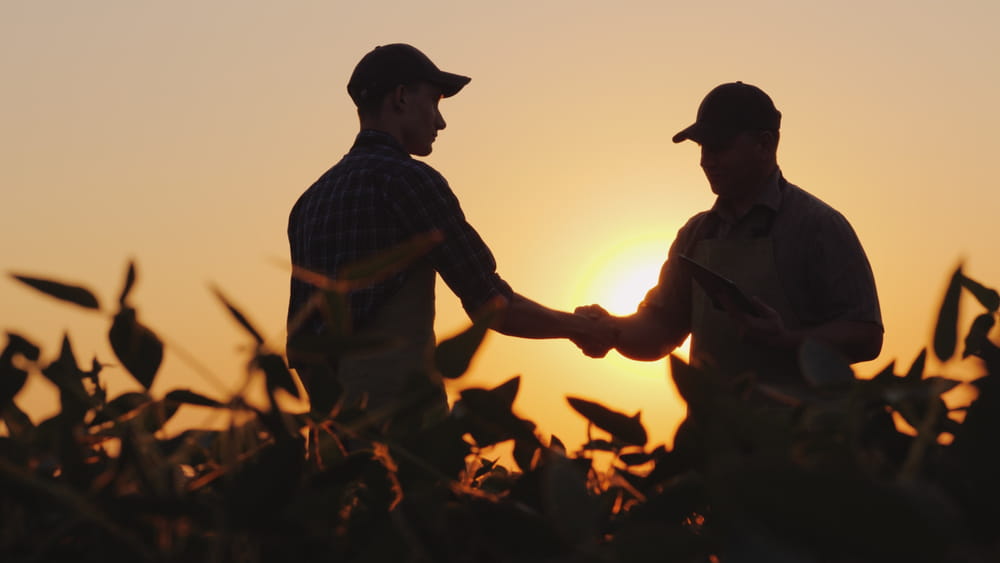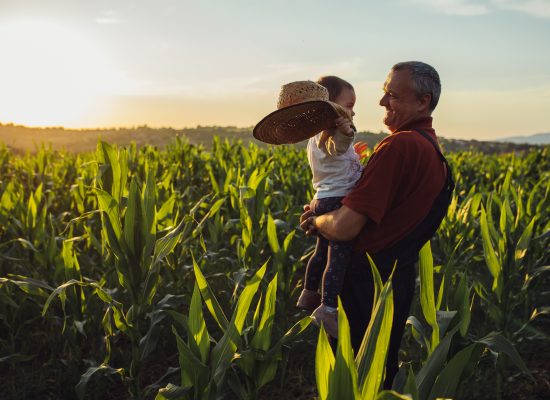To understand how to be successful in planning for farm successions, we first need to acknowledge that each transition will be unique in its own right. There are many reasons why this is the case:
- No two farms are identical
- Farmers have different definitions of retirement
- The individuals that will be taking over will have different skillsets, visions, and values
- The transition timing differ from farm to farm
- The best laid plans can be derailed due to major unexpected farming challenges including floods, droughts, or sickness
- Plans can also change due to unexpected challenges to the personal situation of the current farmer or the incoming generation
At Tall Oak Private Wealth, we start by uncovering the uniqueness of each farm, looking for ways to celebrate and work with each unique situation to ensure favourable transitions. And because each farm and transition are so different, we have developed a clear 5 step process to help you plan successfully.
1. Identify the timing of the transition
The answer to when you want to transfer your farm will drive the rest of the planning. For example, a farmer who is ill and wants to transition out of operations within the next six months will plan very differently than a farmer who is planning an orderly transition to his children in 20 years.
Often many hesitate to plan, feeling they are not yet ready to formalize a transition of their farm. Younger farmers often feel they have time and health on their side to continue to farm before having to commit to a transition. Even those who have started transitioning may be unwilling to set a formal date. They are content to allow the incoming owners mature and show their willingness and ability to work hard, proving them capable to take over the operations, before relinquishing the reigns.
The transition, once started, does not have to happen all at once. In practice, in fact, many transitions are not done overnight; they are staged and take time. Planning is an iterative process that takes many years to develop and often longer to execute.
The reality is that it is never too early to start planning for these transitions.
2. Take stock of current and future values as well as cash flows
The second step is to recognize the current state of the farm and the farming operations; this includes knowing the values of the farm, including land, buildings, inventory, livestock and goodwill as they stand today. You will also want to be able to project these values into the future. Most farmers have a strong idea of their current position but may feel that it is more challenging to predict future values, which is where scenario testing should be applied to ensure a forward-looking valuation can be applied in modelling future values.
Debt and cash flow analysis can also be very helpful at this stage to ensure that a full picture of risk and financials are understood when discussing potential transitions. Having debt is normal in farm operations. However, a higher debt burden can negatively impact cash flow and farm values – which could in turn impact the success of a transition for either the seller or the buyer. The seller may end up with a lower valuation. The buyer may end up with an inability to service debt on operations while at the same time funding the purchase.
3. Visualizing an ideal transition
What does your ideal transition look like?
When planning for our clients, we want to see their vision and understand their wishes; this part of the exercise is rewarding! It allows our clients to focus on positive outcomes both for the current farmers as well as the successors. Visualizing the transition includes answering the following questions:
- Who will be taking over the farm?
- What are your personal goals?
- What are your farm goals today and after you transition?
- Is it important to maximize values for you?
- Is it important for the farm name to succeed you?
- Are there personal values that you would like to see maintained in the farm?
- Is it important to create a legacy in the community?
- How can you minimize taxes?
- How do you want to transition the farm in an ideal situation?
- How much income do you need to live on an annual basis?
- What is your life going to look like – how many trips to Mexico will you be taking?
4. Prepare for the transition
Preparing well in advance of a transition provides the opportunity for a staged transition, allowing the farmer to feel ready and confident about the transition that will occur.
This preparation will entail legal, tax and wealth planning to ensure the best structures and steps are taken to maximize values while minimizing taxes. Planning ensures efficiency is maximized while allowing for flexibility to pivot should circumstances change. However, successfully transferring ownership does not equate to successfully transferring operations.
Preparing the current farmer for an eventual transition is vitally important. Too often time is spent on the continued operations and the formal plan, while no time is spent on the emotional or financial preparedness of the farmer in this transition. Some of the worst transitions have occurred not because the plan was flawed but because the farmer was not prepared to hand over the reigns at the appropriate time. For the successor, this can create formidable stress which can lead to the unwinding of an otherwise well-planned transition.
Equally important is the preparedness of the individual who will be taking over. Have they matured enough to take over? Have they had sufficient life lessons that will help them be successful farm operators? Have they demonstrated the work ethic that is required to succeed in farming? Do they have a clear vision of where they want to take the farm? Are they willing to take risks? Are they wanting to take too much risk?
A beneficial way to assess this and to allow for the successor to gain the necessary experience is to separate the operational and ownership transition through the use of an estate freeze. As we wrote in our previous article (Bill C-208), when talking about an estate freeze:
One of the greatest benefits is that the farming operations can be handed off to the children before ownership and overall control. In other words, it can allow the parents to ensure their children are ready to take over and can effectively manage the farm before fully stepping away. They can also use this time to ensure that they, themselves, are ready to retire and not be involved in the operations.
Finally, in family transitions, preparing those who will not be taking over the farm can be a critical step in ensuring continued family cohesion. Recognizing that trying to ensure all children are treated with an equal hand can, in the end, destroy a farm legacy. For example, if the family has three children but only one of the children will continue the farm operations while the other two will not, the parent should not try to leave the farm in three equal shares. There are other methods to ensure fairness, rather than attempt to treat all children equally.
5. Have a contingency plan and revisit the plan consistently
Plans get derailed. While we cannot predict all potential events, having a plan to protect against the unexpected is one of the most important actions that you can take today. Recognize that an ideal transition takes years to come into effect, and that many events have the potential to derail those plans. For example, some common risks that warrant a mitigating plan include determining how things should be dealt with in case of injury, sickness or death.
Putting a contingency plan in place can ensure that while you are working towards the ideal transition, you can still protect your loved ones as well as the farm should you face a major negative life event. It is also paramount to ensure that Wills are established and updated.
Continuing to reassess your plans along the way will be another important aspect. Tax laws and farm valuations change over time. Realities can change, whether that be the reality of your farm, your life, or that of your successor, with change comes the potential for plan adjustment. When you are transitioning to your children, you not only need to think about them but also their spouses. Be prepared to adjust the plan when they go through major life events that change their readiness or your willingness to stay the course.
It becomes critical when working on your transition plan to ensure you have the right team of professionals. These professionals should be focussed on the agricultural community and have you and your farm as the centre of their focus.
Succession planning should not be thought of as a static exercise done in isolation of how you run your farm, but rather as part of the constant evolution of how you run its operations.
While it may take time to formalize the plan, it is never too early to start!
Interested in Farm Succession Planning? Follow along as David Szalkai, our Insurance & Estate Planning Advisor, discusses a variety of different topics related to Farm Succession in our new video series.
Access the complete series here.
Tall Oak Private Wealth is committed to helping you and your family no matter what stage you are at in succession planning. Reach out to us today and see how we can help turn your plan into reality.
The views expressed in this commentary are those of Tall Oak Capital Advisors as at the date of publication and are subject to change without notice. This commentary is presented only as a general source of information and is not intended as a solicitation to buy or sell specific investments, nor is it intended to provide tax or legal advice. Statistics, factual data and other information are from sources Tall Oak believes to be reliable but their accuracy cannot be guaranteed. This commentary is intended for distribution only in those jurisdictions where Tall Oak Capital Advisors are registered. Securities-related products and services are offered through Raymond James Correspondent Services Ltd., member Canadian Investor Protection Fund. Insurance products and services are offered through Gryphin Advantage Inc., which is not a member-Canadian Investor Protection Fund. This commentary may provide links to other Internet sites for the convenience of users. Tall Oak Capital Advisors is not responsible for the availability or content of these external sites, nor does Tall Oak Capital Advisors endorse, warrant or guarantee the products, services or information described or offered at these other Internet sites. Users cannot assume that the external sites will abide by the same Privacy Policy which Tall Oak Capital Advisors adheres to.




